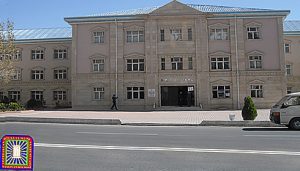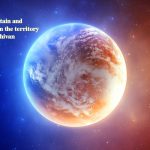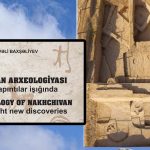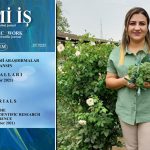Research of Gamigaya Paintings

Gamigaya in Azerbaijan Historiography
Gamigaya situated in the territory of Ordubad region of the Lesser Caucasus Range, is one of the greatest monuments of Azerbaijan. This monument is the marvel of our history. It is the museum of rock paintings under the open sky after Gobustan in Azerbaijan. More than two thousands of rock paintings have been registered here. Rock paintings of Gamigaya have been known to science world since the middle of 60s of the XX century. Gamigaya paintings discovered by geologists in 1965 attracted the researchers and during the period of about 40 years interesting considerations have been said and scientific works have been written about this paintings. It is interesting that not only historians and archeologists, but also representatives of other science spheres – philologists, ethnographers, geographers, architects, linguists and even other amateur researchers expressed opinion about Gamigaya monument.
First of all, the name of “Gamigaya” was explained by the researchers in different ways.
Deceased A.Huseyni, who visited Gamigaya as the first scientists and researcher, related the word “gamigaya” with the ship image that was there, and indicated that it is the image and script with two letters (with runi script). Here the “g” and “m” letters are connected according to script and image rules of its period in such a history that it can be observed as the image [gəmi] (ship) and read as the word [gəmi] (ship). Thus, the letter “g” is drown-written in horizontal direction, and “m” – in vertical direction on the middle of the “g” letter, so that to get desired picture and word. He also noted beside that picture-script, there are also some other ship pictures in “Gamigaya”.
In the researches of A.Huseyni, S.Babayev, N.Babayev [gəmi] (ship), [qayıq] (boat) word has been explained in relation with old word [qabcıq] (little jar), and it was indicated that the word “Qapıcıq” ([gapicig]) was also related with it and it was decided that this word did not have any relation with “qapı” (door).
Prof. V.Aliyev related the name “Gamigaya” supposedly with “resemblance to a huge ship” of the mountain, F.Safarli with the words “gəmçi qaya” ([gəmchi gaya]) and “qabcıq” ([gabcig]), N.Museyibov and S.Ashurov with the fact that Noah’s ark (ark – [gəmi]) “remained on the top of the mountain having turned to stone”, and A.Farzali related it with the word “gəmiçi” ([gəmichi]).
Though we stated above that Gamigaya paintings had been known since 1965, the researches indicate different dates of start of research of these paintings. A.Seyidov and N.Museyibov wrote that it started from 60s of the last century, V.Bakhshaliyev – from 1968, F.Safarli stated that it was discovered accidentally from the end of 60s, A.Gadim wrote that chronology of this historical place started from 1965. But V.Aliyev wrote that he himself conducted archeological researches for the first time in 1968. A.Farzali also notes that Gamigaya paintings for the first time started being researched from 1968 by archeologist V.Aliyev.
By direction of the President of Azerbaijan Republic V.Talibov, the chairman of the Supreme Parliament of Nakhchivan Autonomous Republic, signed the order “About research of Gamigaya Monument in Ordubad Region” on April 26, 2001. As stated in that order, “Research of Gamigaya monument started in 1970s – in the first period of political guidance of Azerbaijan by respected Heydar Aliyev. In 1971 Governing body of the Academy of Sciences of Azerbaijan Republic decided conduction of research work in Gamigaya, publication of a scientific album, production of a scientific-popular film, in 1970-1987 research works were conducted in Gamigaya”.
We should note that, firstly A.Huseyni, V.Aliyev visited Gamigaya at their own will, gave the first information about the paintings here. After that, official research works started. But in the end of 80s the research works were stopped in connection with social and political situation in the republic.
By recommendation of Heydar Aliyev, nation-wide leader of our nation, protector of our history and culture, starting from 2001 scientific expedition was organized to Gamigaya, and this monument started being researched thoroughly. We can indicate just such a fact that, during recent years about 10 books and tens of scientific articles about Gamigaya have been published. For effective activity of the scientific expedition all needed measures were taken by direction of Vasif Talibov, Chairman of the Supreme Parliament of Nakhchivan AR. The chairman of the Supreme Parliament visited Gamigaya in 2001, 2002 and 2005, got acquainted with these monuments and multiple rock paintings, met with the scientists conducting scientific researches and spoke in details about improvement of researches of Gamigaya monuments.
In researcher’s investigations special significance was given to the period of Gamigaya paintings. Conclusion of V.Aliyev, corresponding member of the National Academy of Sciences of Azerbaijan was that, some group of Gamigaya paintings, pictograms date from IV-III millenniums B.C. most of the paintings of schematic goat, ox and human date from IV-II millenniums B.C. By his opinion, Gamigaya paintings and dwelling places here allow to follow lifestyle and way of cultural development of the ancient people who lived in Nakhchivan territory in VII-I millenniums B.C.
N.Museyibli comes to conclusion that these paintings date from the II half of the IV millennium – II millennium B.C., in other article – IV-I millennium B.C., F.Safarli basing on opinions of other researchers – VII-I millenniums B.C., V.Bakhshaliyev – IV-II millennium B.C. There is full reason to get objective result from the researchers’ opinions, and it is appropriate to IV-I millenniums B.C. A.Farzali’s conclusion consists of that “drawing of paintings in Gobustan continued from VIII millennium B.C. – up to the beginning of our era. Gobustan is continuation of Gamigaya or at least is of the same age with it”.
The number, shapes, execution techniques of pictures, paintings on Gamigaya monuments were investigated in detail during research works as well.
Among researchers F.Safarli noted that the paintings had been executed on the rocks by way of rubbing, V.Bakhshaliyev noted that they had been drown by engraving technique, in other scientific work he stated that small, schematic and silhouette paintings had been made by engraving and tattooing techniques. But N.Museyibli wrote that the ancient rock paintings had been drawn by engraving, rubbing and tattooing method. And A.Seyidov states in his book entitled “Gamigaya” that “on more than five hundred rock pieces there were discovered more than 1000 rock paintings made by engraving, rubbing and scraping methods”.
There are various considerations about origin and number of Gamigaya paintings in the researches. A.Seyidov wrote in his above mentioned book that only in 2002 more than 1000 rock paintings were discovered, and they were connected not only with nomadic agricultural life, but also with their ideological views. Arif Gadim states in one his article that “Our great-grandfathers living at that period tried to inform us about the things that they had seen and what had happened to them, just by conditional drawings, that is, by not concrete details”. Prof. V.Aliyev indicating existance of more than thousand of rock paintings, notes that they appeared in connection with social lifestyle, ideology, different traditions, aesthetic and philosophic views of people. F.Safarli wrote that the rock paintings are connected with lifestyle and way of thinking, aesthetic tastes, traditions of people. As stated A. Huseyni, the people who escaped the storm engraved on rocks the events that happened with them, their welfare ceremonies, their ideas about sky objects. N.Museyibli noting that the number of Gamigaya petroglyphs were more than 1000, indicated that they were connected with world-view of ancient people, their environment, lifestyle, household activity, religious beliefs. V.Bakhshaliyev, who is the author of some books, tens of scientific articles about Gamigaya monument, wrote that almost 2000 rock paintings had been discovered, and they had been connected not only with seminomadic cattle-breeding, but also with the people’s belief. In V.Bakhshaliyev’s researches historical roots of the painting, their description, dating, mythology of the paintings, their topography and etc. are given in detail.
It becomes clear from the researches that subject of these paintings differing by complexity of topic and composition was dedicated to belief and labor activity of our forefathers, industrial life of hunter, cattle-breeder and farmer tribes. Among rock paintings of Gamigaya there are pictures attracting holiday ceremonies, as well as various paintings with astronomic, geographic images.
Paintings consisting of the images of human, deer, goat, ox, snake, bird, carriage, dog, lion, fantastic animal, various signs, stamps and hunting scenes were divided into three groups by some researchers, the first group included astral images, the second – animal images and tearing scenes, and the third – human images and hunting scenes. There are also disagreements between researchers in interpretation of the images. A.Gadim and N.Museyibli does not agree with a number of interpretations of V.Bakhshaliyev. In V.Karimov’s research Gamigaya paintings were analyzed in comparison with the paintings of Gobustan, Absheron and Kalbajar.
Some researchers consider Gamigaya images the samples of pictographic script. This kind of script does not consist of letters and expresses any idea by means of signs or images. There are those who call these images mixi script or runi script. |The idea of looking for an alphabet in these paintings and the fact that some of them are stamps, attract attention. A.Farzali, who published one monograph and a lot of articles about Gamigaya signs, wrote that he had found in Gamigaya 20 out of 24 Oghuz stamps and come to conclusion that unit Turkish-Azerbaijan alphabet was based on Nakhchivan-Gamigaya alphabet. He declares that this alphabet consists of 22 consonants and 9 vowels. These are the author’s considerations for the present and the researchers have not expressed their attitude to this.
Gamigaya paintings have been researched by scientists-ethnographers as well (Abbasov A., Gadirzadeh G. and etc.), and compared horse, carriage images in these petroglyphs with models of carriage wheels found in the territory of Nakhchivan AR attributed to the Bronze Age, and got scientific conclusions for our moral culture.
Our insidious enemies – Armenian scientist standing by their tradition of falsification of the history, without any scientific foundation tried to set up Gamigaya monuments being the most ancient memory of our nation, for Armenian monument, and even replaced the name of Gamigaya with fiction names. But the toponymes, rock paintings existing there, which are characteristic for culture of the ancient Turkish world, and the result of the conducted researches prove again that Gamigaya monument is one of the most ancient culture monuments of our nation.
Gamigaya paintings originated in connection with lifestyle, ancient traditions of our nation, as valuable historical and art samples allowed to observe and study initial development stages of our history and culture, and all these will be researched by researcher more thoroughly.
BIBLIOGRAPHY
- Гусейнли A. Эрмитаж каменного века. «Техника и Молодежи». №5, 1972; again his. Əfsanədən həqiqətə. «Qobustan»j., №1, 1973; again his. Xalqımızın mənlik heykəli. «Sovet Naxçıvanı» q., 1986, 30 yanvar.
2.Алиев В.Г. Наскальные изображения Гемигая. КСИА, 1977, №148; again his. Gəmiqaya abidələri. Bakı, 1992; again his. Петроглифы Гемигая. Баку, 1985; again his. Gəmiqaya səlnaməsi. «Qobustan» j., №2, 1999; again his. Наскальные изображения Гемигая «Проблемы изучения наскальных изображений в СССР». Москва, 1990, с.104-108; again his. Petroqlyphs of Gemiqaya journal of Pakistan Archaeologists
Forum 2, 45-59; again his. Naxçıvan-Azərbaycanın tarixi diyarıdır. Bakı, 2002; again his. Gəmiqaya abidələri əsasında Naxçıvan tarixinin yeni səhifələri yazılır. «Respublika» qəzeti, 9, 13 aprel 2005-ci il (№79, 82).
- Baxşəliyev V. Gəmiqaya təsvirlərinin poetikası. Bakı, 2002; again his. Gəmiqaya təsvirləri. Bakı, 2003; again his Gəmiqayanın rəsmləri. «Şərq qapısı» q., 2001, 5 iyun; again his. Gəmiqayanın astral rəsmləri. «Şərq qapısı»., 2001, 23 iyun; again his. Gəmiqayanın ibadətlə bağlı rəsmləri. «Şərq qapısı» q., 2001, 17 iyul; again his. Gəmiqaya rəsmlərində tanrı obrazı və mifoloji varlıqlar. «Şərq qapısı» q., 2001, 31 iyul; again his. Gəmiqaya: sirli-soraqlı dünya. «Şərq qapısı» q., 2001, 7 avqust; again his. Gəmiqayanın rəsmləri mifoloji düşüncə tərzidir. «Şərq qapısı» q., 2001, 8 sentyabr; again his. Gəmiqayanın qayaüstü təsvirləri. «Şərq qapısı» q., 2001, 20 sentyabr; again his. Gəmiqaya rəsmlərinin mifologiyası. «Elm» q., 2002, 5 aprel and etc.
- Müseyibov N. Azərbaycanın qayaüstü işarə və damğaları. Avtoreferat. Bakı, 1998; again his (Ə.Bədəlovla). Gəmiqaya işarələri. Naxçıvan MR – 75 illiyinə aid Elmi əsərlər. Xüsusi buraxılış, №5, 1999; again his. Gəmiqaya rəsmləri. Bakı, 2002; again his. Gəmiqayada arxeoloji tədqiqatlar. «2000-2001-ci illərdə aparılmış arxeoloji və etnoqrafik tədqiqatların yekunlarına həsr olunmuş elmi sessiya»nın tezisləri. Bakı, 2002; again his (S.Aşurovla birlikdə). Gəmiqayada arxeoloji tədqiqatlar nə göstərir? «Azərbaycan» q., 2002, 10 dekabr; again their. Gəmiqaya abidəsində erməni mənbələrinə aid heç bir dəlil yoxdur. «Azərbaycan» q., 2001, 26 sentyabr; again his. Qobustan və Gəmiqaya işarələrindəki bir qrup işarə haqqında. – «Azərbaycanın qədim və orta əsrlər tarixi problemləri» kitabında. Bakı, 1992; again his. Gəmiqayada aşkar edilmiş yeni qayaüstü rəsmlər. – «Azərbaycanın qədim və orta əsrlər tarixi problemləri», №2, 2001; again his. Gəmiqayanın arxeoloji tədqiqi. «Azərbaycan arxeologiyası» j., №1-2, 2002 and etc.
- Babayev N. Qayaların açılmamış sirləri. «Elm və həyat» j., №2, 1985 (S.Ələsgərov və Ə.Qurbanovla); again his. Təxəyyül, yoxsa gerçəklik. «Elm və həyat» j., №11, 1987 (S.Ələsgərovla); again his. Açıq səma altında qalareya. «Gənclik» j., №4, 1990 (Q.Qədimovla); again his. «Молодость» ж., №4, 1990 (Q.Qədimovla); again his. Эхо прошлых век. «Şərq qapısı» q., 1990, 23 dekabr; again his. Гямигая – музей под открытым небом. «Азербайджан и азербайджанцы», №11-13, 2001 (S.Babayev və E.Babayevlə) and etc.
- Seyidov A. Gəmiqaya (toponimlər, qədim köç yolları). Bakı, 2003; again his. Gəmiqaya. «Şərq qapısı» q., 2003, 22 fevral; again his Naxçıvan e.ə. VII-II minilliklərdə. Bakı, 2003.
- Talıbov V. Offical Departament Order of Naxhichevan Autonomous Republic Supreme Council Chairman. About research of Gamiqaya monument in Ordubad district. «Azerbaıjan Azerbaıjans», №11-12, 2002; Gəmiqaya abidəsinin tədqiq edilməsi haqqında Naxçıvan MR Ali Məclisi sədrinin sərəncamı. NDU-nun xəbərləri, №7, 2002.
- Həbibbəyli İ. Gəmiqayaya tarixi səfər. NDU-nun xəbərləri, №7, 2002; again his. Scientific expedition to Gamiqaya «Azerbaıjan Azerbaıjans» №11-12, 2002.
- Səfərli F. Gəmiqaya abidələri. «Naxçıvan»j., №2, 2002.
- Qədim A. «Gəmiqaya» yalanları sevmir. «Şərq qapısı» q., 2001, 21 iyun.
11.Керимов В. Гямигая. Бакы, 2005.
- Fərzəli Ə. Gəmiqaya-Qobustan əlifbası. Bakı, 2003; again his, «Gəmiqaya» işarələrinin sirri açılır. «Yeni Azərbaycan» q., 2002,13 sentyabr; 3 oktyabr; 10 oktyabr; 20 noyabr; 1 dekabr; 22 dekabr; again his. Tarixi həqiqət danılmazdır. «Yeni Azərbaycan» q., 2002, 19 dekabr; again his. Qayalarda əlifba sərgisi. «Yeni Azərbaycan» q., 2003, 16 yanvar; again his. Mən Gəmiqayada «Tanqrı» sözü oxudum. «Yeni Azərbaycan» q., 2003, 30 yanvar; again his. Gəmiqaya və Qobustanda yaradılış ideyası. «Yeni Azərbaycan» q., 2003, 28 fevral; again his. Gəmiqayada «Dədə Qorqud Kitabı» ilə səslənən bütöv bir cümlə. «Yeni Azərbaycan» q., 2003, 5 mart; again his. Gəmiqaya-Qobustan əlifbasında işarələr səsin fonetik quruluşunu izləyir. «Yeni Azərbaycan» q., 2003, 8 aprel and etc.
- Abbasov A. Azərbaycanın qədim dövr etnoqrafiyasının öyrənilməsində Gəmiqaya təsvirlərinin əhəmiyyəti. – «2000-2001-ci illərdə aparılmış arxeoloji və etnoqrafik tədqiqatların yekunlarına həsr olunmuş elmi sesiya» nın tezisləri. Bakı, 2002.
Ismayil Hajiyev
GAMIGAYA IN AZERBAIJAN HISTORIOGRAPHY
The problems of researching Gamigaya as important natural monument are surveyed in the article. There are researched the history of its study, the meaning of the word Gamigaya, period, number, form, technique of execution of the rock paintings. It is paid attention to opinions and views of numerous researchers; the level of study of the problem in Azerbaijan historiography is analyzed.
ISMAYIL HAJIYEV, Nakhchivan Department of the ANAS
Translated by Kamala Amiraslanova
“Khabarlar” (“News”) of Nakhchivan Department of the ANAS , 2005, No, pg. 55-62






